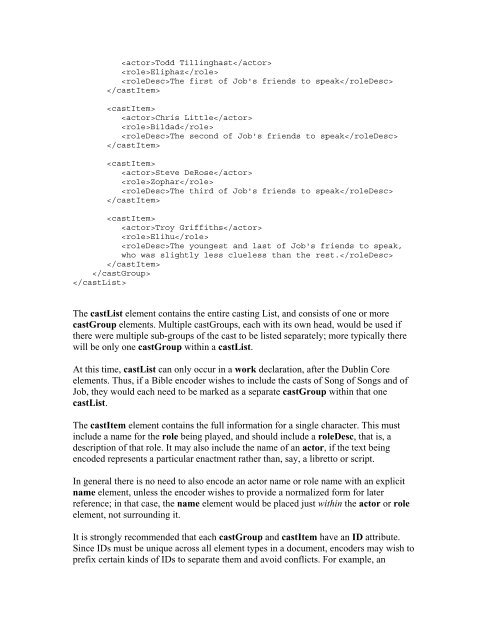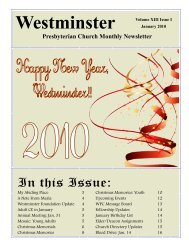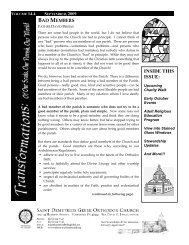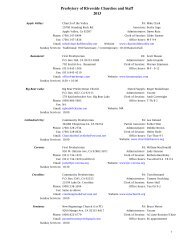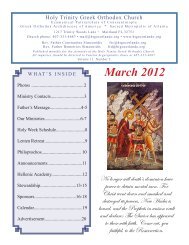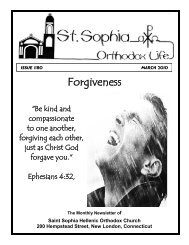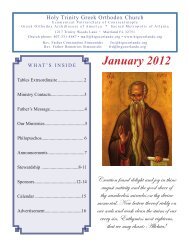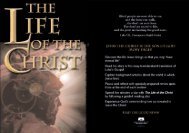OSIS? 2.0.1 User's Manual - Web services are running on AMBIB
OSIS? 2.0.1 User's Manual - Web services are running on AMBIB
OSIS? 2.0.1 User's Manual - Web services are running on AMBIB
Create successful ePaper yourself
Turn your PDF publications into a flip-book with our unique Google optimized e-Paper software.
Todd Tillinghast<br />
Eliphaz<br />
The first of Job's friends to speak<br />
<br />
<br />
Chris Little<br />
Bildad<br />
The sec<strong>on</strong>d of Job's friends to speak<br />
<br />
<br />
Steve DeRose<br />
Zophar<br />
The third of Job's friends to speak<br />
<br />
<br />
Troy Griffiths<br />
Elihu<br />
The youngest and last of Job's friends to speak,<br />
who was slightly less clueless than the rest.<br />
<br />
<br />
<br />
The castList element c<strong>on</strong>tains the entire casting List, and c<strong>on</strong>sists of <strong>on</strong>e or more<br />
castGroup elements. Multiple castGroups, each with its own head, would be used if<br />
there were multiple sub-groups of the cast to be listed separately; more typically there<br />
will be <strong>on</strong>ly <strong>on</strong>e castGroup within a castList.<br />
At this time, castList can <strong>on</strong>ly occur in a work declarati<strong>on</strong>, after the Dublin Core<br />
elements. Thus, if a Bible encoder wishes to include the casts of S<strong>on</strong>g of S<strong>on</strong>gs and of<br />
Job, they would each need to be marked as a separate castGroup within that <strong>on</strong>e<br />
castList.<br />
The castItem element c<strong>on</strong>tains the full informati<strong>on</strong> for a single character. This must<br />
include a name for the role being played, and should include a roleDesc, that is, a<br />
descripti<strong>on</strong> of that role. It may also include the name of an actor, if the text being<br />
encoded represents a particular enactment rather than, say, a libretto or script.<br />
In general there is no need to also encode an actor name or role name with an explicit<br />
name element, unless the encoder wishes to provide a normalized form for later<br />
reference; in that case, the name element would be placed just within the actor or role<br />
element, not surrounding it.<br />
It is str<strong>on</strong>gly recommended that each castGroup and castItem have an ID attribute.<br />
Since IDs must be unique across all element types in a document, encoders may wish to<br />
prefix certain kinds of IDs to separate them and avoid c<strong>on</strong>flicts. For example, an


